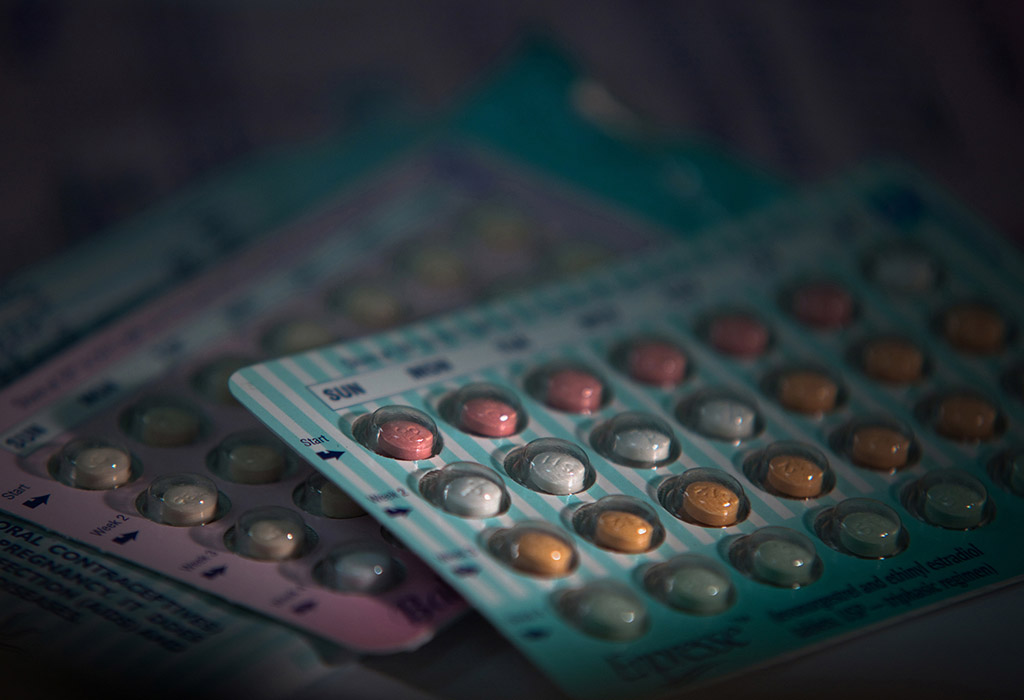The ‘male Pill’?
Hormonal methods present some promising options for male contraception. Use of hormones are sometimes referred to as a ‘male Pill’ but, if taken orally, testosterone in the pill would be quickly broken down by the liver and also potentially cause liver damage. It would more likely come as an injection or implant or even a gel that would be applied (potentially as a pleasant massage…) to the shoulders.
In women, hormonal contraceptives suppress signals from the pituitary gland in the brain to the ovaries, preventing the egg from maturing, so that women don’t ovulate and can’t get pregnant. In men, they interfere with the production of sperm by signalling to the hormone-producing parts of the brain to stop making the hormones that promote the production of testosterone and sperm.
It usually takes around three months before sperm are washed out completely, similar to a vasectomy.
There are three main options for potential hormonal contraceptives for men, each containing different hormones or hormone combinations.
Androgen only
Androgens are sex hormones that have a key role in male fertility and give men their male characteristics (such as facial hair). The main and best known one is testosterone.
The World Health Organization carried out two large-scale multinational studies (here and here) of androgen contraceptives in the 1990s, with Australian researchers playing a key role. More than 670 men from 16 centres in 10 countries received weekly injections of a form of testosterone called testosterone enanthate. Sperm production was dramatically lowered to levels low enough to effectively prevent pregnancy (it’s not necessary for sperm count to be reduced to zero). However, these very low levels of sperm were not achieved consistently across all the men. Though it’s not really known why, Caucasian men were less likely than their Chinese counterparts to achieve the necessary low levels of sperm using an androgen-only contraceptive. They may need to use a contraceptive that, in addition to testosterone, includes another hormone called progestin.

Progestin plus androgen
Progestins are synthetic versions of a hormone called progesterone and are widely used in female contraceptives to help stop ovulation. While progesterone has important functions in pregnancy in women, it has no known role in men. As a male contraceptive, it would also signal to the pituitary gland to not make the hormones that trigger testosterone and sperm production.
But if men use only progestin, the result is androgen deficiency, including impotence. So men need to take progestins in combination with an androgen such as testosterone to retain their sexual function and male characteristics. As with androgen-only contraceptives, research is ongoing into the best way to deliver the hormone combo so that it will be effective and acceptable.
GnRH antagonist plus androgen
A third area of investigation is the use of injectable drugs that target something called gonadotropin-releasing hormone—GnRH for short. As with progestin, these also need to be used with androgen, usually testosterone.
GnRH is made in the hypothalamus, a hormone-producing part of the brain. GnRH stimulates the release of a hormone from the pituitary gland that binds to receptors in the testicles, triggering sperm production. GnRH antagonists interrupt this process by binding to the GnRH receptors and blocking them. As a result, when used together with testosterone, sperm output is very effectively suppressed.
Long-acting injections of GnRH antagonists plus testosterone are a promising possibility for male contraception. However, it’s unlikely to be as cost effective as progestin.
What's ready now?
So there are a few options in the works, but they’re not available yet. What about other methods that don’t involve playing with hormones? Well, there’s abstinence … but don’t worry, that’s not all. There are some non-hormonal methods on the way.





